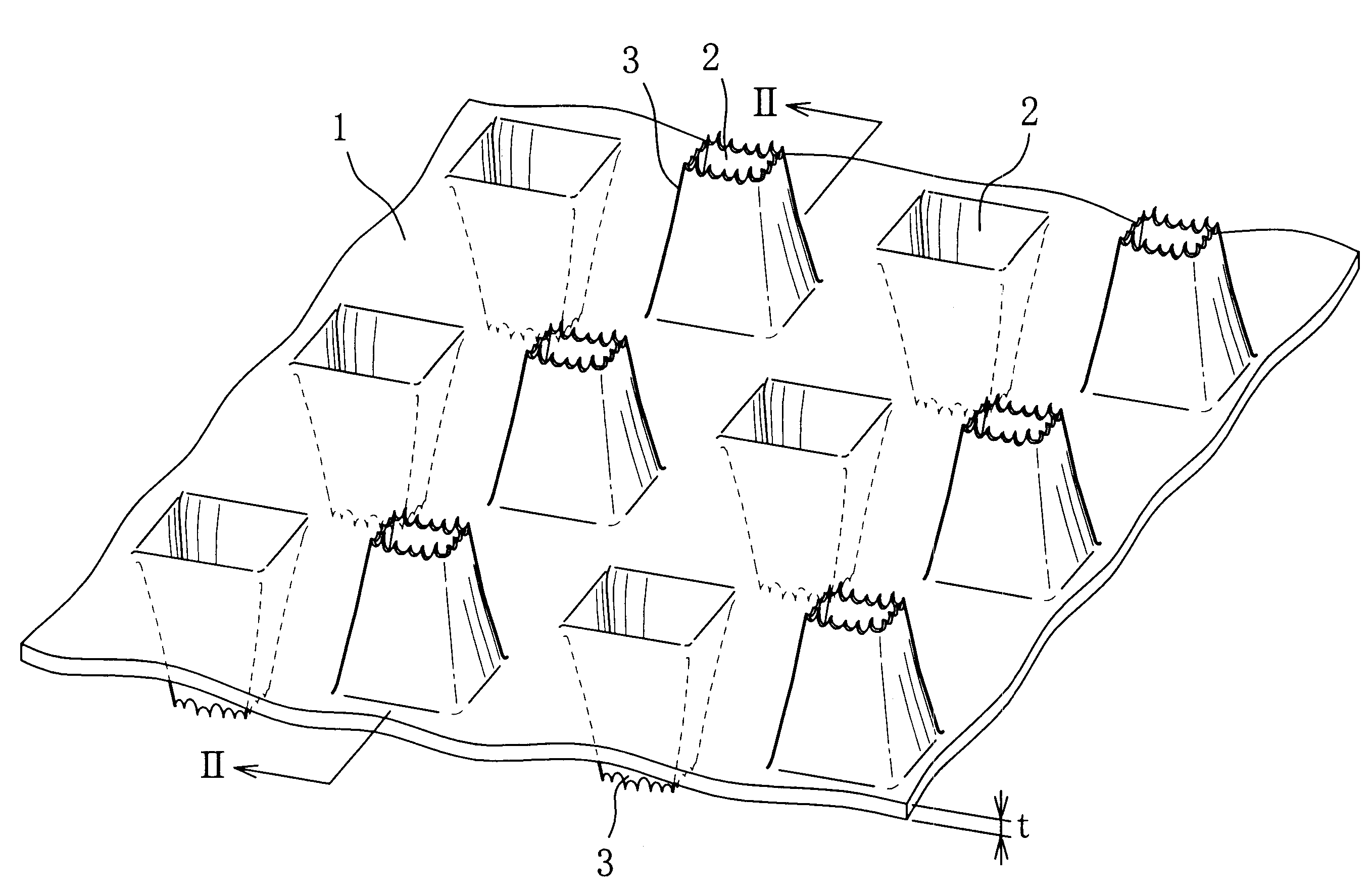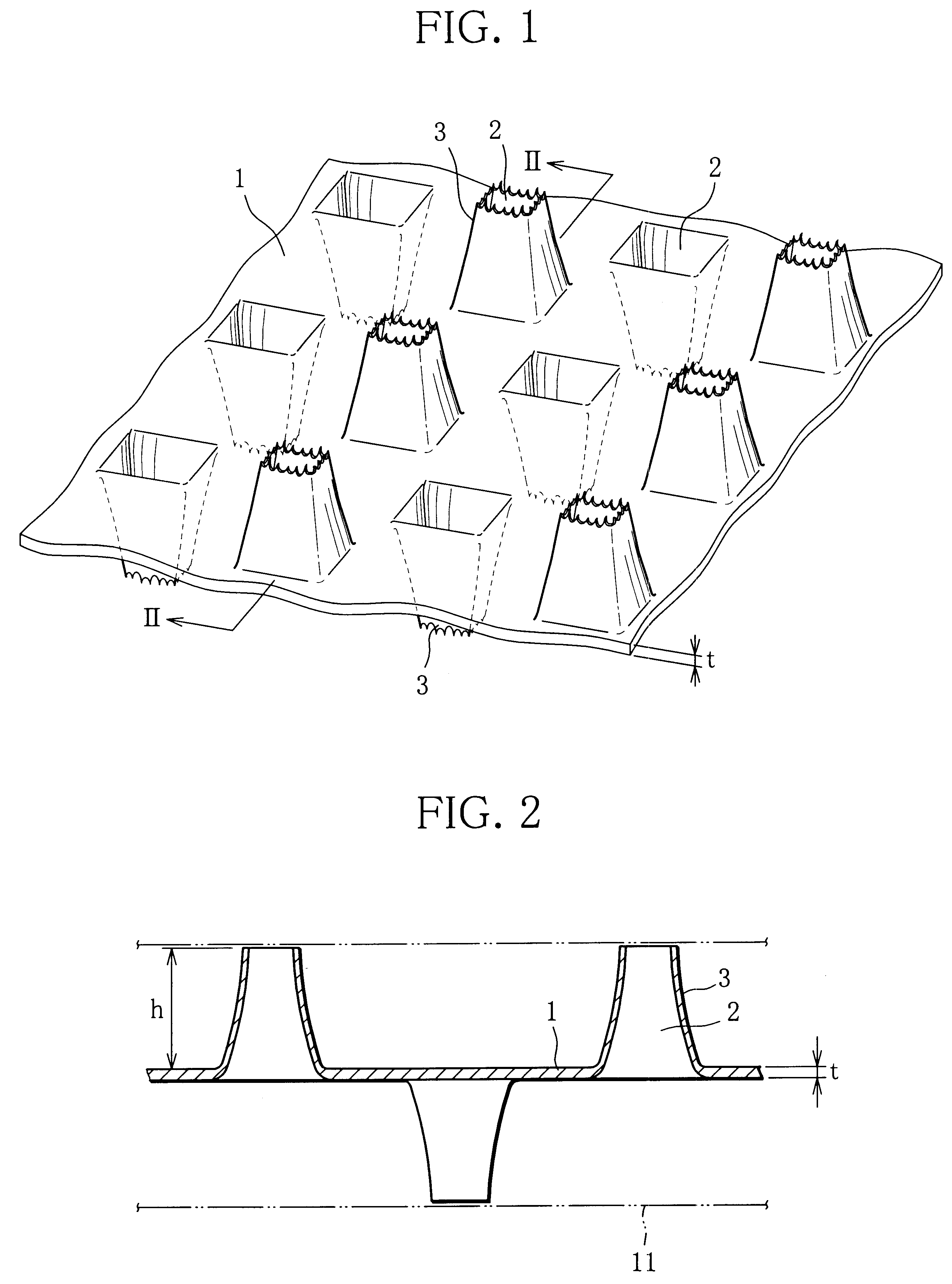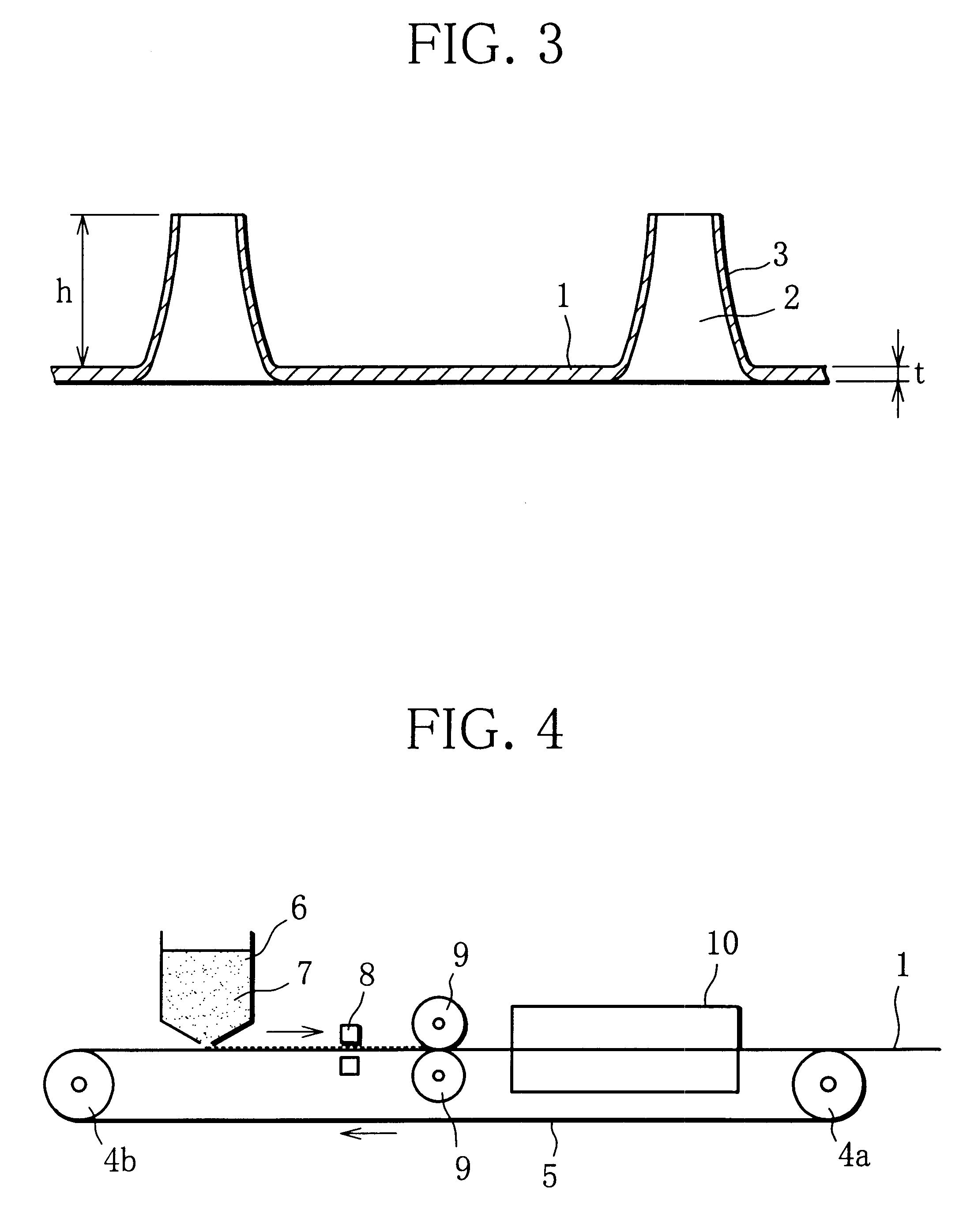Current collector substrate in electrode for use in alkaline secondary battery, electrode using the same, and alkaline secondary battery having incorporated thereinto the electrode
a technology of current collector substrate and electrode, which is applied in the direction of alkaline accumulator electrode, cell components, and nickel accumulators, etc., can solve the disadvantages of high production cost of battery, high price of sheet, and poor capturing ability of mixture, and achieve excellent capturing ability for mixtures. , the effect of low cos
- Summary
- Abstract
- Description
- Claims
- Application Information
AI Technical Summary
Benefits of technology
Problems solved by technology
Method used
Image
Examples
Embodiment Construction
(1) Production of Current Collector Substrate
By the powdery calendering process using the apparatus shown in the diagrammatic view of FIG. 4, an Ni powder sinter sheet was produced as follows.
First, on belt conveyer 5 rotated at a speed of 1.0 m / min on the infinite track between rolls 4a, 4b was continuously fed an Ni powder 7 having an average particle diameter of 0.5 .mu.m contained in a hopper 6, and the fed Ni powder was conveyed downstream and formed into a powder layer having a thickness of 300 .mu.m by a doctor blade 8 which was arranged on the downstream side of the hopper. Then, the powder layer was subjected to calendering through a pair of calender rolls 9, 9 having the same roll diameter under a load imparted to the unit work width of about 2.94.times.10.sup.3 N / mm from the upward and downward directions, thereby forming a pressurized powder layer.
Next, the pressurized powder layer was introduced into calcination furnace 10 in which the atmosphere was an Ar (argon) atmos...
PUM
| Property | Measurement | Unit |
|---|---|---|
| thickness | aaaaa | aaaaa |
| particle diameter | aaaaa | aaaaa |
| thickness | aaaaa | aaaaa |
Abstract
Description
Claims
Application Information
 Login to View More
Login to View More - R&D
- Intellectual Property
- Life Sciences
- Materials
- Tech Scout
- Unparalleled Data Quality
- Higher Quality Content
- 60% Fewer Hallucinations
Browse by: Latest US Patents, China's latest patents, Technical Efficacy Thesaurus, Application Domain, Technology Topic, Popular Technical Reports.
© 2025 PatSnap. All rights reserved.Legal|Privacy policy|Modern Slavery Act Transparency Statement|Sitemap|About US| Contact US: help@patsnap.com



